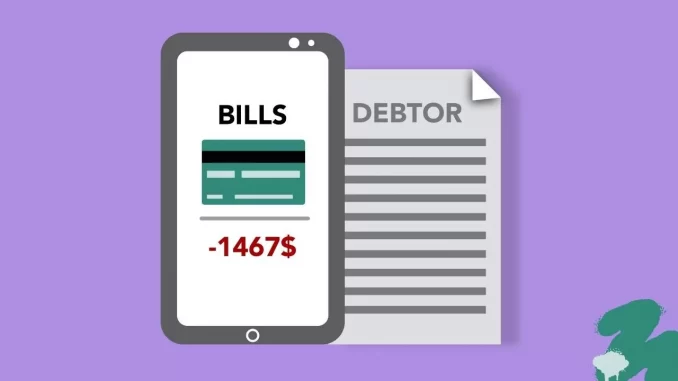The process of estate planning is like solving a complex puzzle, with each piece fitting together to form a complete picture of your financial legacy.
One of these essential puzzle pieces is a trust, a legal arrangement that allows a third party, known as the trustee, to hold and manage assets on behalf of the beneficiaries. Before diving headfirst into establishing trust, it’s crucial to understand the steps involved in creating a solid foundation.

This comprehensive guide will explore eight key considerations to help you create a trust that serves your unique needs and objectives.
1. Understanding Trusts and Their Importance
A trust is more than just a legal document; it’s a powerful tool to help you achieve your estate planning goals. At its core, a trust consists of three main components: the grantor (the person who creates the trust), the trustee (the individual or institution responsible for managing the trust), and the beneficiaries (the individuals or entities who benefit from the trust).
Trusts can serve various purposes, such as protecting assets, minimizing taxes, or ensuring that a loved one with special needs is cared for after you’re gone. By understanding the fundamentals of trust and learning how to create a trust, you can make informed decisions about which type best aligns with your objectives.
2. Identify Your Goals and Objectives
When it comes to establishing trust, one size does not fit all. Determining its primary purpose is the first step in designing a trust that suits your unique circumstances.
Are you looking to minimize estate taxes, protect assets from creditors, or ensure that your heirs are provided for according to your wishes? Identifying your specific goals will help you choose the right type of trust and tailor its provisions accordingly.
Your financial and family circumstances play a crucial role in shaping your trust strategy. Consider factors such as your net worth, the nature of your assets, and the dynamics of your family when deciding on the structure of your trust.
Be mindful of potential tax implications and asset protection. A well-thought-out trust can help you navigate these complexities and create a lasting legacy.
3. Choose the Right Type of Trust
With a clear understanding of your goals and objectives, it’s time to choose the appropriate type of trust.
Trusts are of various types, each with unique characteristics and benefits. Some common ones include revocable trusts, which can be altered or dissolved by the grantor during their lifetime, and irrevocable trusts, which cannot be altered once established.
There are special needs trusts, designed to provide for individuals with disabilities without jeopardizing their government benefits, and charitable trusts, which support charitable organizations while offering tax advantages to the grantor.
A solid understanding of the different types of trusts and their purposes is the first step toward creating an effective estate plan. Consider the pros and cons of each trust type before making a decision, and consult with a professional if necessary.
3. Select a Trustee
Choosing the right trustee is a critical step in establishing a trust. The trustee is responsible for managing the assets, distributing them to beneficiaries, and ensuring that the trust’s terms are carried out according to your wishes.
When selecting a trustee, consider their reliability, financial acumen, and willingness to take on the role. Remember that the trustee’s duties can be complex and time-consuming, so choosing someone capable and committed to the task is essential.
If you cannot identify a suitable individual, consider appointing a professional trustee, such as a trust company, bank, or attorney. While this option may come with additional fees, it can provide valuable expertise and impartiality, ensuring that your trust is managed effectively and in accordance with your intentions.
4. Determine Trust Beneficiaries
Deciding on your trust’s beneficiaries is crucial to the planning process. Be as specific as possible when defining your beneficiaries, whether they’re family members, friends, or charitable organizations.
By clearly outlining who should benefit from your trust, you’ll avoid potential disputes and confusion down the line.
When establishing the terms of inheritance, consider factors such as your beneficiaries’ age, financial maturity, and individual needs.
You might opt to stagger distributions over time or tie them to specific milestones, such as completing college or reaching a certain age. For minor beneficiaries, it’s essential to designate a guardian or incorporate provisions to ensure that their inheritance is managed responsibly until they come of age.
5. Fund the Trust
An unfunded trust is essentially an empty vessel. You can transfer various assets into a trust, including real estate, bank accounts, investment accounts, and personal property. It’s important to properly title these assets in the name of the trust, ensuring that they are subject to the trust’s provisions and protection.
Timing is also an important consideration when funding a trust. Assets, like life insurance policies or retirement accounts, can be transferred upon death by naming the trust as the beneficiary.
Others, such as real estate or bank accounts, may need to be transferred during your lifetime. Consult with a professional to ensure that your trust is funded correctly and in a timely manner.
6. Draft the Trust Document
The trust document is the foundation of your trust and should clearly outline its terms, conditions, and intentions. A well-drafted trust document is crucial to avoid potential disputes, legal challenges, or unintended consequences.
Some essential elements of a trust document include the names of the grantor, trustee, and beneficiaries, the purpose of the trust, and the trustee’s powers and responsibilities.
While it may be tempting to draft the trust document yourself, seeking professional assistance from an attorney experienced in trust and estate law is strongly advised.
They can ensure that your trust document complies with applicable laws and regulations and that the language is clear, concise, and unambiguous.
7. Regularly Review and Update Your Trust
Life is full of changes, and your trust should evolve to reflect these shifts. Significant life events, such as marriage, divorce, the birth of a child, or the death of a beneficiary, may warrant a review of your trust. Additionally, keep an eye on changes in tax laws and regulations that could impact your trust’s effectiveness.
Establish a routine for periodic reviews to ensure your trust remains aligned with your goals and circumstances. This could involve meeting with your attorney or financial advisor annually or more frequently if necessary.
8. Communicate Your Trust Plans to Family Members
Open and honest communication with your loved ones about your trust plans is essential to minimize potential conflicts and misunderstandings. Discussing your intentions and the reasoning behind your decisions can help family members understand the trust’s purpose and how it fits into your overall estate plan.
Conclusion
Establishing a trust is a powerful and effective way to protect and manage your assets, ensure your loved ones are cared for, and create a lasting legacy. By following these eight key considerations, you’ll be well on your way to crafting a trust that serves your unique needs and objectives. Don’t hesitate to seek professional guidance throughout the process, as expert advice can prove invaluable.









